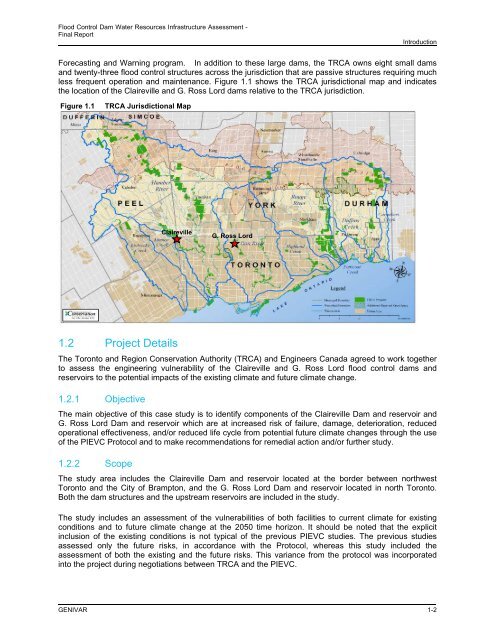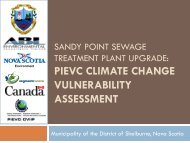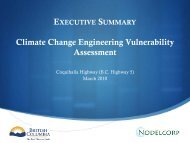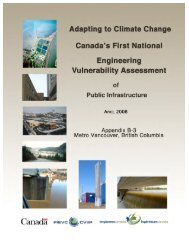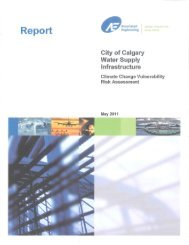Final Report - Vulnerability Committee
Final Report - Vulnerability Committee
Final Report - Vulnerability Committee
You also want an ePaper? Increase the reach of your titles
YUMPU automatically turns print PDFs into web optimized ePapers that Google loves.
Flood Control Dam Water Resources Infrastructure Assessment -<strong>Final</strong> <strong>Report</strong>IntroductionForecasting and Warning program. In addition to these large dams, the TRCA owns eight small damsand twenty-three flood control structures across the jurisdiction that are passive structures requiring muchless frequent operation and maintenance. Figure 1.1 shows the TRCA jurisdictional map and indicatesthe location of the Claireville and G. Ross Lord dams relative to the TRCA jurisdiction.Figure 1.1TRCA Jurisdictional MapClairevilleG. Ross Lord1.2 Project DetailsThe Toronto and Region Conservation Authority (TRCA) and Engineers Canada agreed to work togetherto assess the engineering vulnerability of the Claireville and G. Ross Lord flood control dams andreservoirs to the potential impacts of the existing climate and future climate change.1.2.1 ObjectiveThe main objective of this case study is to identify components of the Claireville Dam and reservoir andG. Ross Lord Dam and reservoir which are at increased risk of failure, damage, deterioration, reducedoperational effectiveness, and/or reduced life cycle from potential future climate changes through the useof the PIEVC Protocol and to make recommendations for remedial action and/or further study.1.2.2 ScopeThe study area includes the Claireville Dam and reservoir located at the border between northwestToronto and the City of Brampton, and the G. Ross Lord Dam and reservoir located in north Toronto.Both the dam structures and the upstream reservoirs are included in the study.The study includes an assessment of the vulnerabilities of both facilities to current climate for existingconditions and to future climate change at the 2050 time horizon. It should be noted that the explicitinclusion of the existing conditions is not typical of the previous PIEVC studies. The previous studiesassessed only the future risks, in accordance with the Protocol, whereas this study included theassessment of both the existing and the future risks. This variance from the protocol was incorporatedinto the project during negotiations between TRCA and the PIEVC.GENIVAR 1-2


